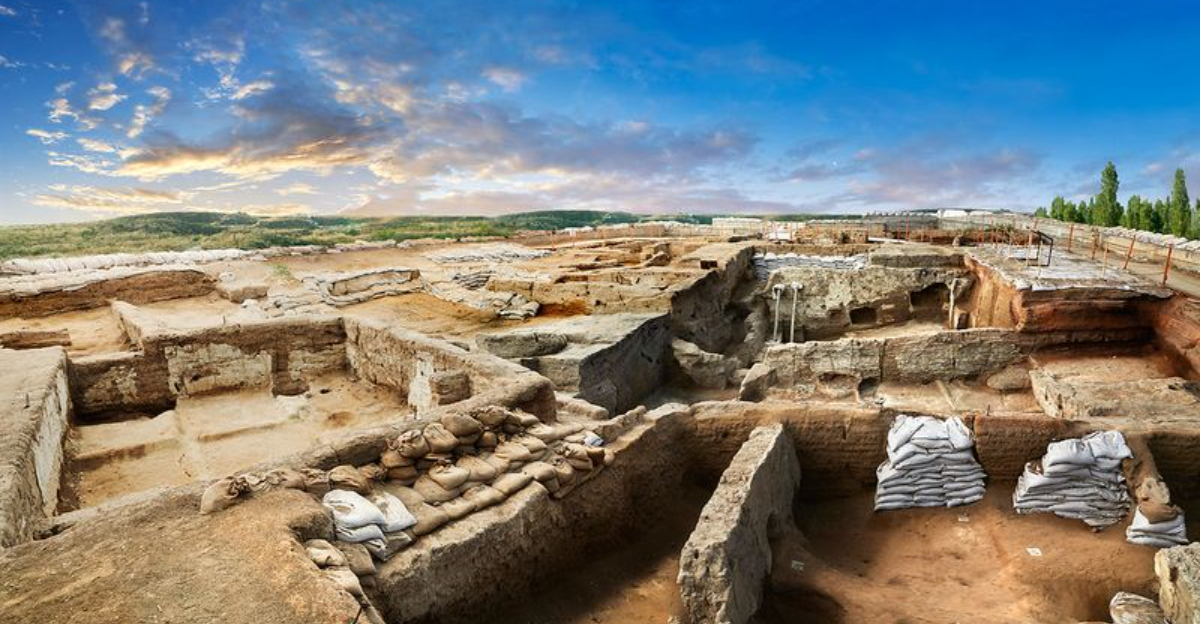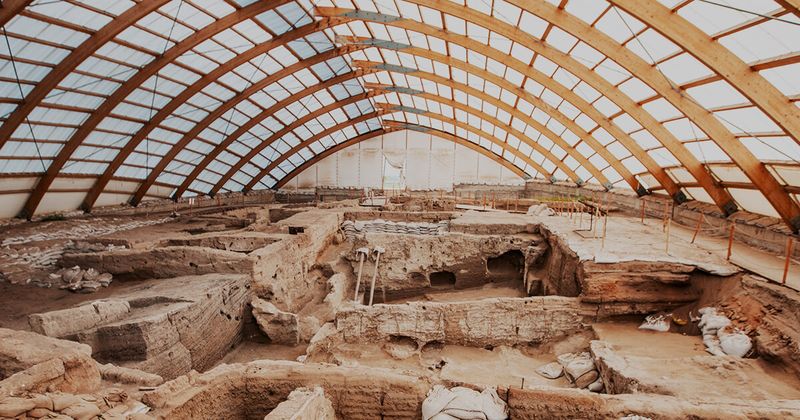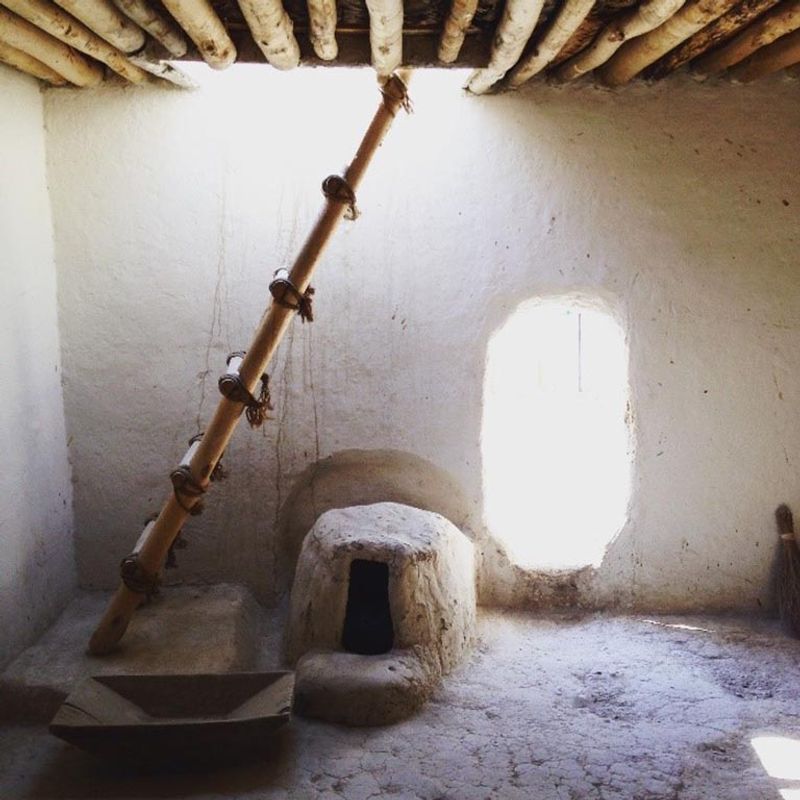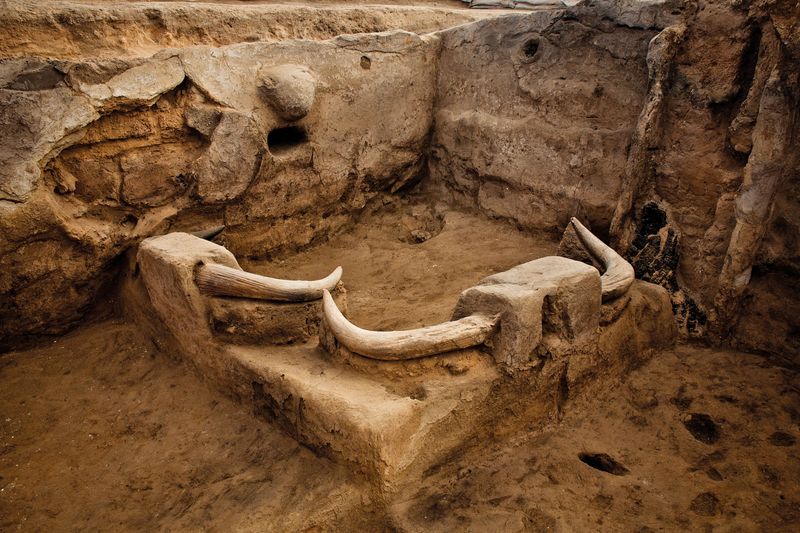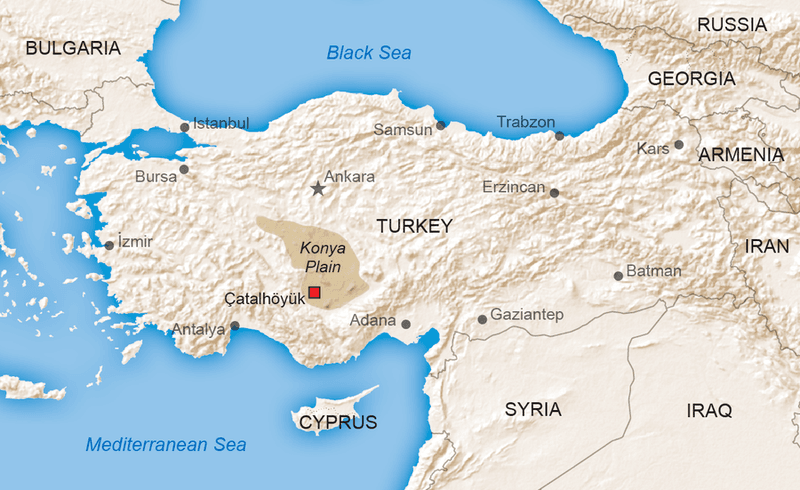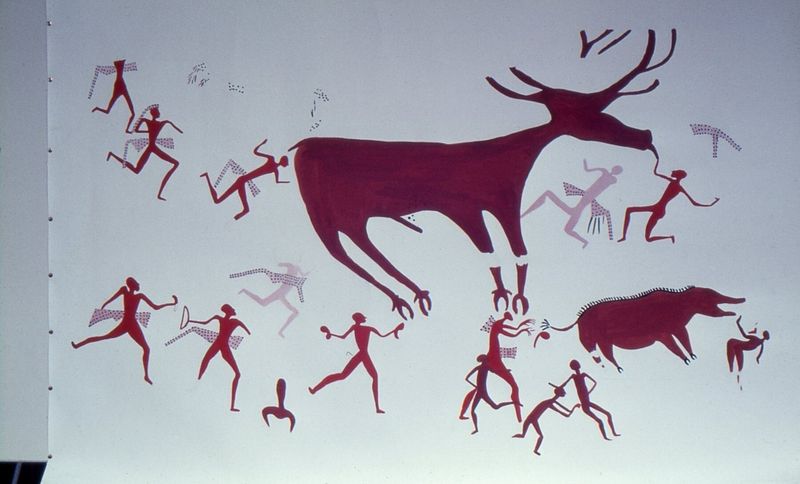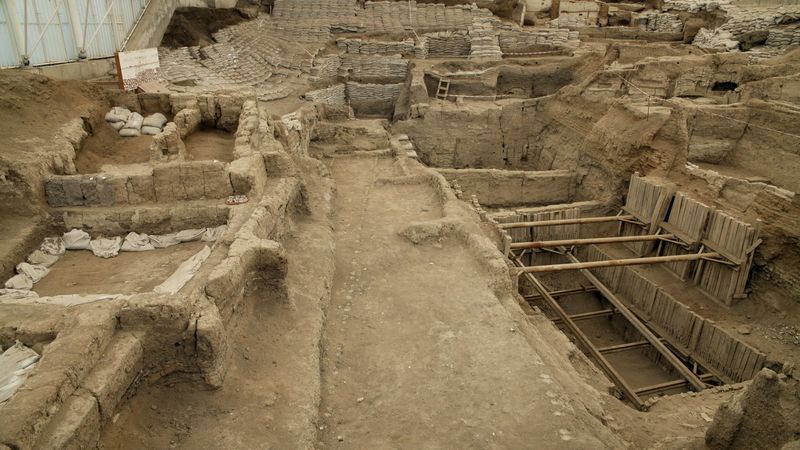Hidden beneath layers of earth for thousands of years, the ancient city of Çatalhöyük has completely transformed our understanding of early human civilization.
Discovered in the 1950s in what is now Turkey, this remarkable settlement dates back to 7100 BCE, making it one of the oldest cities ever found.
What archaeologists uncovered there challenged everything we thought we knew about how cities began and how early humans lived together.
1. Built Before Modern Tools Existed
Long before humans invented the wheel, developed writing systems, or discovered how to work with metal, Çatalhöyük was already a thriving community. Residents constructed elaborate homes using only stone tools and their bare hands.
The settlement flourished over 9,000 years ago when most humans were still nomadic hunter-gatherers. This timeline makes Çatalhöyük one of humanity’s earliest experiments with permanent urban living.
2. A Rooftop Highway System
Streets? Who needs them! Çatalhöyük’s homes shared walls in a honeycomb pattern with absolutely no ground-level pathways between buildings. Residents traveled across the settlement by walking on rooftops.
To enter their homes, people climbed down ladders through openings in their ceilings. This unusual design might have been for protection against wild animals or hostile outsiders, creating one of history’s first defensive urban plans.
3. Surprisingly Sophisticated Interiors
Despite being from the Stone Age, Çatalhöyük homes featured amenities that wouldn’t seem out of place in modern dwellings. Families enjoyed built-in furniture, including raised platforms for sleeping and specialized cooking areas with ovens.
Residents regularly plastered and replastered their walls, creating smooth surfaces they often decorated with vivid paintings. Some homes even had separate areas for food preparation and crafting activities—a Neolithic version of our modern living spaces.
4. Ancestors Underfoot
Family connections took on a whole new meaning in Çatalhöyük, where the dead were buried directly beneath the floors of family homes. Residents would place their deceased loved ones under their sleeping platforms, maintaining a physical connection even after death.
Bodies were often buried in a fetal position and sometimes accompanied by personal items or offerings. This practice suggests a belief system that honored ancestors and kept family bonds intact across generations—literally keeping loved ones close.
5. Agricultural Pioneers
The transition from hunting to farming happened right here! Çatalhöyük residents were among the first humans to master agriculture, cultivating wheat, barley, and peas in nearby fields.
They also domesticated sheep and goats, keeping these animals close to their settlement. This agricultural revolution allowed people to stay in one place year-round for the first time in human history, laying the foundation for all future civilizations and permanently changing humanity’s relationship with the natural world.
6. Obsession With Natural Symbols
Walking into a Çatalhöyük home would reveal walls adorned with real bull heads plastered directly into the structure. These dramatic displays, called bucrania, suggest powerful spiritual beliefs centered around natural forces.
Equally common were small figurines depicting women with exaggerated features. Far from being mere decorations, these items likely represented deep spiritual connections to fertility, nature’s cycles, and perhaps even early religious practices that predate formal temples by thousands of years.
7. Location, Location, Location
Çatalhöyük’s founders chose their spot wisely! The settlement was strategically positioned near the Çarşamba River on Turkey’s Konya Plain, giving residents access to everything they needed.
Fertile soil supported their crops, while wetlands provided clay for building and reeds for baskets. Nearby forests offered timber and hunting grounds. This prime location allowed the community to thrive for over 1,400 years—longer than many modern nations have existed!
8. Early Social Equality
Kings and queens? Not in Çatalhöyük! Unlike later civilizations with clear hierarchies, this ancient community shows remarkable signs of social equality.
All homes were roughly the same size with similar possessions. Men and women received comparable burial treatments with no obvious status differences. Researchers found little evidence of specialized leadership buildings or elite residences, suggesting decisions may have been made communally—a surprising democratic approach thousands of years before democracy was formally invented.
9. Layer Cake of History
Rather than abandoning old buildings, Çatalhöyük residents simply built new homes on top of old ones. When a house deteriorated, they would carefully fill it in, slice off the tops of the walls, and construct a new dwelling on this foundation.
This process created a human-made mound called a tell with 18 distinct layers of occupation spanning 1,400 years of continuous habitation. Archaeologists can literally dig through time, with each layer revealing different chapters of this remarkable community’s story.
10. Spiritual Life Without Temples
While Çatalhöyük had no dedicated temples, spirituality permeated everyday life. Many homes contained special areas that archaeologists identify as household shrines, complete with figurines, paintings, and ritual objects.
Wall murals depict what appear to be religious ceremonies and mythological scenes. The community likely shared spiritual practices centered around nature, fertility, and ancestors. This intimate approach to worship suggests organized religion began not in grand temples, but in family homes around shared beliefs.
11. Redefining Civilization’s Origins
Before Çatalhöyük’s discovery, experts believed true cities required writing, monumental architecture, and formal governments. This ancient settlement shattered those assumptions entirely.
Here was a large, organized community with sophisticated art, specialized crafts, and complex social structures—all without kings, palaces, or written records. Çatalhöyük proved that urban life began with cooperation and shared culture, not hierarchy. This revelation forced historians to completely reconsider how and why humans first came together to build civilization.
